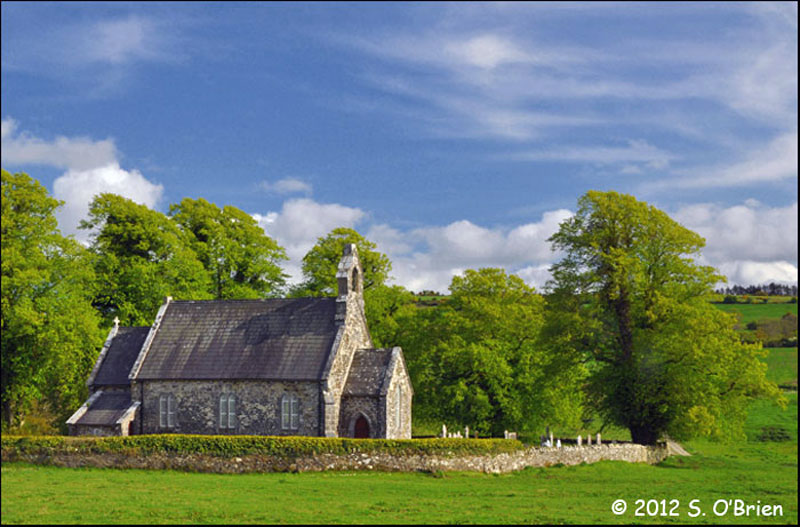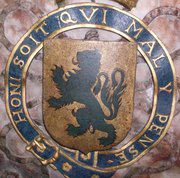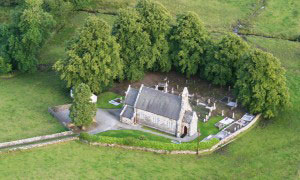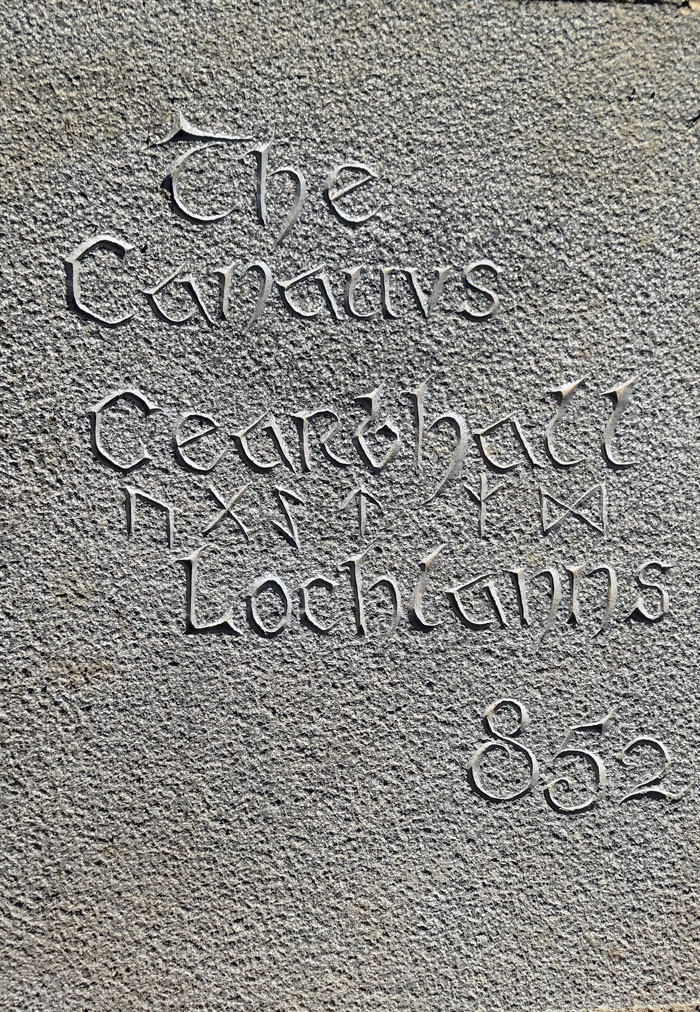Crohane
Crohane

Crohane C.O.I. site of the original home of St Sineach
Extracts from O’Hanlon’s Lives of Irish Saints (P.55)
—ST. SENACHIA; SINCHE; SINEACH; SINCHEA, OR SEGNIC; PATRON OF CROHANE PARISH, COUNTY OF TIPPERARY.—
The various appellations, Senachia, Sinche, Sineach, Sinchea, or Segnic are all forms of the same name; and no less than four or five such saints—holy virgins—are distinguished in our calendars, viz: at 14th. February, St. Sinech of Srath or Srath Fronn; at the 22nd of August, St. Sinche of Coolbanagher, Kings’s County; at 5th of October, St. Sinche of Crohane, County Tipperary; at the 9th of November, St. Sinche of Cluainleth-theangadh —thought by Dr. O’Donovan to have been the original name of Taughshinny, near Ballymahon, County of Longford; and at the 4th of December, St. Sinche of Teaghshince, now Kilshine, near Navan, County of Meath.
Indeed, it seems to be quite clear, the two latter Sinches may not be resolvable into two distinct persons. With the Saint of the 5th of October, we have now briefly to treat. She is mentioned in the Martyrology of Tallagh, at that date as a virgin, daughter of Fergna, of Cruachan Maigh Olma. The Book of Leinster copy of the Martyrology of Tallagh, enters a feast for this virgin at the 5th day of October. In the Feilire of St. Angus, she is commemorated at this same date. A commentator adds notes to distinguish her. In the Martyrology of Marianus O’Gorman, the feast of St. Sinche is entered at the 5th of October, and his Scholiast states, that she was Sinech, the daughter of Fergna, from Cruachan Maighe Abhna.
The holy virgin, St. Sinche or Sineach, was descended from the race of Eoghan Mor, son to Oilioll Olum, according to the Genealogical History of the Irish Saints. According to Maurice Lenihan, Esq., Saint Senachia most likely was sister of the illustrious Saint Senachus, Bishop, who is named in an ancient Martyrology in the vernacular Irish quoted by Ward as one of the apostles or auxiliaries of the great Saint Finnian, who, despising royal honours and the name and rank of King, became Abbot of Cluan-errard, where he presided over three thousand disciples. Among these were St. Kieran the elder, St. Columb-Kille, St. Kieran the younger, St. Laserian, St. Columbanus of Tir-da-Glass in the County of Tipperary, St. Cannechus, St. Sinellus the son of Moenachus, the two Saints Brendan, St. Ruadanus, St. Movius or Berchanus and St. Senachus, Bishop,
The calendarist of the Donegal Martyrology fell into the mistake of putting this place within Caenraighe, now known as Kenry, a barony in Limerick County, on the south side of the river Shannon. However, it is situated, not on the confines of Limerick County, as stated, but rather on the borders of Kilkenny.
The denomination of Magh-Abhna has been reformed into Mowney, a parish said to be in the Barony of Lower Ormond, County of Tipperary; but rather, it may be stated, in the Barony of Slievardagh, in the south-eastern part of that shire. In the last-named barony, there is a Parish called Crohane, and this must properly be identified with the Cruachan of St. Sinche.
Some old church site, patron day or holy well, with the legendary lore of the spot, might throw some additional light on her history. This holy virgin, who is mentioned in the Feilire Aenguis, must have flourished before the year 600 AD, but her acts are not known to exist. Her festival was remembered on 5th October until the early 1800’s.
ARTICLE ll—Legend
1 Edited by the Rev. Matthew Kelly, D.D., p. xxxv,.
2 Thus: Sinche uir ingen fergnai o Chruachan maige alma.
3 In the Leabhar Breac copy we find ; —
blog donlúc logmair
la cec martir namrae
Sínech ingen fergnáe
Cruachan Muige Abnae
Thus rendered into English by Whitley Stokes —“A fragment of the precious stone, with a hundred marvellous martyrs. Sénech Fergna’s daughter, of Cruacha Maige Abnae.”— Transactions of the Royal Irish Academy. Irish Manuscript Series. Vol. i., part i. On the Calendar of Oengus, p. cxlix.
4 Thus ; Sinech ingen Fergnae, .1. maith no Fergnai nomen patrir eiur, rendered into English, “Sinech Fergnae’s daughter, i.e., good, or Fergnae is her father’s name.”—ibid, p. cliv.
Again ; Cruachan muige Abnae, .1. inicracha,, muige Ilabila in eogailacllt Chairil thus translated, “of Cruacha Maige Abnae i.e., in Cruachan Maige Abina in Eoganacht Caisil.” ibid, p. cliv.
5 See Dr. Whitley Stokes’ “Felire Hui Gormain,” pp. 190-191.
6 See Ibid, nn. I.I.
7 Known as the Naomh-Shancus.
8 In “Sancti Rumoldi Martyris inclyti Archiepiscopi Dubliniensis, Mechliniensium, Apostoli, etc.
9 The account adds, “quos Hiberniae duodecem Apostolos seu Auxiliaries nuncupamus ut et merito Findenum seu Finnianum Sanctorum Hiberniae Magistrum.— ibid. Sectio 10, Dissertatio Historica de Patria St. Romuoldi, par. 11., p. 186.
10 Edited by Drs. Todd and Reeves, pp. 366, 267.
11 See Dr. O’Donovan’s “Geneaologies, Tribes, and Customs of hy-Fiachrach,” n.(n.) p. 309.
12 Sec Dr. O’Donovan’s “Annals of tlse Four Masters,” vol. ii. n (n) pp. 634, 635.
13 See Lewis’ “Topographical History of Ireland,” vol. ii., p. 399.
14 In 852 a great victory was there obtained over the Lochlaelns. It was formerly called Cruachan in the Eoghanacht, or Cruachan Maigh-Eamhna. See “Three Fragments of Annals,” edited by Dr. O’Donovan, pp. 130 to 136 and n (y)—Ibid.
15 We find the following entry in the extracts from Archbishop Butler’s Visitation Book, published by Maurice Lenihan, Esq., in the Limerick Reporter of February 18th, 1873, under the head,” Cashel of the Kings”:
“1752, July 9.—J.J. B. Ordinary visited ye chapple of Ballingarry, dedicated to ye Assumption of ye B. V., in good repair, wherein he makes use of two plate chalices of his own acquisition with three vestments whereof one is of white satin laced with silver stole, maniple, etc., all new; the other green brocad but old, the third a good stripe satin with white and green stripe, two good albs with amicts, six good altar towls, together with two altar stones, altar in good order and the altar likewise; one new mass book and an old one in reasonable good order, four corporals entire and good order, one plate pixis guilt with gold inside, oyle stock made of block tin. There are beside the above denomination two more without chappels; the one dedicated to St. John the Baptist, named ye parish of Lismolin; the other dedicated to Sancta Senechia, celebrated on the 5th of October; third, the parish of Croghan, of which three parishes he has collation granted by Arch. Bp.C. B. The aforesaid acknowledged and possessed by Law. -Lonergan.
MICHAEL FIHAN, Secry
THE GREAT BATTLE OF CROHANE 852
It is not generally known that Crohane was the scene of a battle in which the Norwegians were defeated with terrible slaughter in the year 852. Up to this time the annals record the Lochlanns had not suffered so great a loss in all Eire. In an ancient compilation known as “Three Fragments of Annals” translated from the Irish by John O’Donovan, the following account of the battle is given:
“The men of Munster sent messengers to Cearbhall (son of Dunlaing) to come. They also requested that he bring the Danes with him”. (The Danes were enemies of the Lochlanns at the time). They asked for help to assist and relieve them against the Northmen who were harassing and plundering them at that time. Clearbhall came with his army of Danes and Gaeidhils and when the Lochlanns saw them they were filled with fear. From a high place (Crohane Hill) Cearbhall addressed his own people first, and then the Danes. The speeches are recorded in the book. They then rose out and attacked the Lochlanns. The Locklanns fled to the woods which were then surrounded on every side by Cearball. They killed and slaughtered the Locklanns at Cruachain in the Eoghanacht (Crohane) this victory was gained in 852. There is a field in Crohane called “The Canauves or Hodgins Canauves” (Irish for Bones).
In “A history of Ser Kieran” published 1992, about Clareen Parish, Co. Offaly, it states that Cearbhall was buried in Ser Kieran’s churchyard in 885. There is a burial slab with a Celtic Cross marking his grave. The book states he was the most famous of the Kings of Ossory ( He ruled Ossory for 40 years according to the “Book of Leinster”). In 872 he became King of the Danes in Dublin and was recognised as such until his death 13 years later His descendants are also buried in Ser Kieran’s graveyard.
 EARLDOM OF CLONARD IN SPAIN, ITS NORMAN-IRISH ROOTS , THE OLD “CLUAIN IORAIRD” (Meath) AND THE
EARLDOM OF CLONARD IN SPAIN, ITS NORMAN-IRISH ROOTS , THE OLD “CLUAIN IORAIRD” (Meath) AND THE  GREAT CLONARD (Wexford)
GREAT CLONARD (Wexford)
SUTTON COAT OF ARMS. JOHN VI. VICEROY OF IRELAND (The Anglonorman Period)
The Old Clonard (Irish, Cluain Eraird, or Cluain Ioraird, Erard’s Meadow) was situated on the beautiful river Boyne, just beside the boundary line of the northern and southern halves of Ireland. The founder of this school, the most famous of the sixth century, was St. Finnian, an abbot and great wonder-worker. He was born at Myshall, County Carlow, about 470. At an early age he was placed under the care of St. Fortchern, by whose direction, it is said, he proceeded to Wales to perfect himself in holiness and sacred knowledge under the great saints of that country. After a long sojourn there, of thirty years according to the Salamanca MS., he returned to his native land and went about from place to place, preaching, teaching, and founding churches, till he was at last led by an angel to Cluain Eraird, which he was told would be the place of his resurrection.
Here he built a little cell and a church of clay and wattle, which after some time gave way to a substantial stone structure, and entered on a life of study, mortification, and prayer. The fame of his learning and sanctity was soon noised abroad, and scholars of all ages flocked from every side to his monastic retreat — young laymen and clerics, abbots and bishops even, and those illustrious saints who were afterwards known as the “Twelve Apostles of Erin”.
In the Office of St. Finnian it is stated that there were no fewer than 3000 pupils getting instruction at one time in the school in the green fields of Clonard under the broad canopy of heaven. The master excelled in exposition of the Sacred Scriptures, and to this fact must be mainly attributed the extraordinary popularity which his lectures enjoyed. The exact date of the saint’s death is uncertain, but it was probably 552, and his burial-place is in his own church of Clonard.
For centuries after his death the school continued to be renowned as a seat of Scriptural learning, but it suffered at the hands of the Danes, especially in the eleventh century, and two wretched Irishmen, O’Rorke of Breifney and Dermod McMurrough, helped to complete the unholy work which the Northmen had begun. With the transference by the Norman Bishop de Rochfort, in 1206, of the See of Meath from Clonard to Trim, the glory of the former place departed forever. Irish Life in Book of Lismore; HEALY, Ireland’s Ancient Schools and Scholars (Dublin, 1890).
After the dissolution of the monasteries by order of Henry VIII, the lands of the Clergy were confiscated, passing to be the property of Sir Thomas Cusack, Chancellor of Ireland and whose daughter Elizabeth was married to John de Sutton, Count of Clonard.
The deterioration in the monastery buildings during the last centuries before lands were taken by the Chancellor of Ireland was already a clear evidence, However it was improved by the Clonard-Cusack clan who obviously allowed the “monks” to remain in their “new lands”, under the pseudonime of farmers.
In spite of History’s turbulences the ruins of Cluain-Iraird, stayed visible up to 1798 – year in which – the “Battle of Clonard” took place, although Cromwell (c.1648) in his previous pass by this holy place , destroyed the few buildings wich they had been able to preserve and to maintain still on.
Cromwell, as the largest of massacrors left Clonard in ruins and without their inhabitants, so by this way his repressive activity on the Papists or Catholics , would be never forgotten.
Defensive Family’s system including five Sutton’s Castles were also destroyed in Wexford (Great Clonard Lands) during the “Religion Wars”, by Cromwell.
Sources: Looking forward to the past Clonard Heritage Trail – County Meath Office
Sources: Sutton Dudley de Clonard House in Spain, Eire and UK. – (A Bourbon Branch in Spain since 1851)
The Settlement and Architecture of Later Medieval – Slieveardagh, County Tipperary. Richard Clutterbuck – Volume II
This thesis is presented in fulfilment of the regulations for the degree of M.Uttin Archaeology, University College Dublin. – Supervisors: Prof. Barry Raftery, Dr. Tadhg O’Keeffe, Dr. Muiris 0’Sullivan, August 1998,
Crohane Tower House, Crohane Td., Crohane Pro, 55/9, S 282453, Tl055-043, 12/1997
Location: The townland of Crohane is situated in south-centre of Slieveardagh, within the folds of the Slieveardagh hills. The castle is situated 587 metres south-east of Crohane Church (18) and 3.2km west of Lismalin (42). The land is predominantly used for pasture today and is recorded as duel purpose arable and pasture in 1654 (Civil Survey I, 129).
Crohane castle was sited at an altitude of 160 metres on an shale outcrop in a small river valley. The tower house is in a sheltered position with a westerly aspect. The site was accessed by a path approximately 100 metres to the south west of the site. This lane was once a public route but has subsequently fell out of use and now acts as a double ditch path to fields for the farmers. The castle is sited 200 metres east uphill from a small stream which probably acted as the principal water source for the castle and settlement. Crohane castle was sited at the centre of the parish of Crohane and acted as the focus of a farm-stead settlement
History: Crohane Castle belonged to Thomas Butler of a lesser Butler family in the Seventeenth Century. The castle was derelict in 1654 (Civil Survey 1,129). The Down Survey maps for the parish depict a small castle with three houses to the west. The Barony map only depicts the castle. The Ordnance Survey Letters for the parish of Crohane record the presence of part of a circular castle, with part of the first floor vault surviving (0. S. Letters Co. Tipperary I, 197). Local tradition says Cromwell camped his army at this site at the same time as he camped at Lismalin.
Description: The remains of Crohane castle consists of two portions of the south east circuit of a circular tower house. The remains are denuded and none of the original face survives, although the remains have a slight curve (Fig. 8, Plate 17). The Ordnance Survey Letters recorded the circumference for the castle as 21 feet 6 inches (6.5 metres) when more stood in the last century (O.S. Letters Co. Tipperary I, 197). This appears to have been a partial circumference. The walls of the castle were built of slabs of roughly coursed red shale which is the bed rock in this locality and the tower house stands on an outcrop of this stone. The only diagnostic remains consist of a portion of the exposed interior of a mural chamber or embrasure and the inner face of the base of a garderobe with two projecting stones on either side of the base of the chute. The surviving walls survive to a thickness of 2 metres; nothing now remains of the vaulting mentioned by the Ordnance Survey letters. The field surrounding the tower house has some earth works which are the result of the shale outcrop.
Comment: Crohane castle appears to be similar to the example at Farrenrory tower house (21) (Fig. 45) and is one of a rare type of tower house in Ireland; however, little survives of the tower house at Crohane. The positioning of the garderobe chute exit suggests the entrance to the tower was around the other side of the tower house; on the northern side. Because of its similarity to Farrenrory tower house (21), this tower house may be dated to the sixteenth century.
Location: Crohane is situated in the south-east of the study area in the Slieveardagh hills. Crohane church was situated 587 metres north west of Crohane castle and3.2km west of Lismalin. Crohane church was sited at an altitude of 160 metres on the side of a hill sloping south east to a small stream. The church site is adjacent to a road.
Comment: Nothing survives of the original church. The site appears to have been in use as a parish church at least since the thirteenth century and may even have functioned as a pre-Norman church site. In the later medieval period the church was important enough to become a prebend and supported a prebendary in Cashel Cathedral. Crohane Church site is one of the few church sites in Slieveardagh still in use both as a place of worship and as well as a place of burial.
 Crohane Church site, Crohane Td., Crohane Pr., 55/2, S 278455, Tl055-004101, 12/1997
Crohane Church site, Crohane Td., Crohane Pr., 55/2, S 278455, Tl055-004101, 12/1997
History: Crohane church is valued at 16 marks in 1302-07 (Cal. Doc. Ire. 1302-07, 286). By 1437 Crohane had become a prebend of the Cathedral church of Cashel when David Hackett is recorded as a prebendary of Crohane (Seymour 1908, 329). The church was taxed for 12 shillings in the Procurations of the Diocese of Cashel and Emly (Seymour 1908, 331). In 1476 Edmond Morris obtained the prebendary of Crohane from the Archbishop of Cashel James Cantwell (Ryan & Skehan 1966, 15). He is recorded in a papal mandate as detaining Crohane for more then a year without being ordained a priest or permission in 1476-7 (Ryan & Skehan 1966, 9). Edmund Morris resigned the prebendary of Crohane in 1484-5 (Ryan & Skehan 1966, 15). In 1484 Richard Treues, a cleric of the dioceses of Cashel, was granted the canonry and prebendary of Crohane with a yearly value not exceeding 10 marks sterling (Cal. Papal Regis. XIV, 64). Edmund Comyn was rector of Crohane church in 1544 (Orm. Deeds IV, 269). In 1607 Teg O’Cockran, ‘a scholar and fugitive’ held the vicarage of Crohane for five marks per annum; the church had no curate (Cal. State Papers Ire., 1606-08,239). The Civil Survey records that the vicar of Crohane church was the proprietor of the 4 acres of arable glebe land, fenced with a ditch (Civil Survey II, 401). Crohane church is depicted in the Down Survey maps with the glebe land in the north of the townland next to Ballykerrin townland.
Description: There are no upstanding remains of the medieval church at Crohane. It was replaced by a neat little Church of Ireland Church built in 1839 (Hassett & Fitzgerald 1990, 37) and is still in use. The Ordnance Survey Letters identified foundations of a church measuring 28 feet (8.48 metres) by 22 feet (6.6 metres) constructed of salty stone. This may be the remains of the medieval church or the Catholic chapel which was blown down in the night of the Great Wind in 1839. A holy well in the next field 53 metres west by north west of the modern Protestant church was dedicated to the virgin St. Sinech (O.S. Letters. Co. Tipperary I, 196-7). The grave yard in which the church is sited is contained within a wall at a higher level to the next field. The grave yard contains graves from the eighteenth century to the present day and also is still in use.
Location: Crohane is situated in the south centre of Slieveardagh, in the hills (Fig. 26). The land is used predominantly for pasture today. Crohane parish centre is sited at approximate altitude of 160 metres, within the folds of a small river valley. A small stream flows past the tower house and church. A road runs east-west through the centre of Crohane over the hills towards Killenaule (37).
Description: The remains of settlement in the centre of Crohane consist of a church site (18) and a ruined sixteenth century tower house (17) (Fig. 44). The tower house is sited approximately half a kilometre from the church site and is accessed along a separate path, which is now disused but had once been a right of way. There are no physical remains of the houses depicted in the Down Survey; earthworks around the castle site appear to be natural rock outcrops.
Comment: There does not appear to have been a nucleated settlement in the centre of Crohane. The tower house and church, separated by half a kilometre, appear to have had little association other then being in the same townland. UnfOltunate1y nothing remains of the medieval church. The land owners of Crohane in 1640 were absentees, which may explain the poor nature of the parish centre settlement of Crohane. The other tower houses in Crohane Parish, at Coolquill (16) and Ballykerrin (8), appear to have been larger and more successful settlements in the mid-seventeenth century.
Crohane Settlement, Crohane Td., Crohane Pr., 55/9, S 282453, T 1055-041-043, 12/1997
History: Other then the parish church (18) the historical documentation does not record a significant settlement in the centre of parish in the medieval period. The Civil Survey recorded that Thomas Butler of Kilconnell was the owner of Crohane in 1640 (Fig. 21); the only building recorded in 1654 was the ruined castle of Crohane. The castle was also depicted by the Down Survey, with three houses to the west. Crohane townland had a population of 52 in 1659 (Pender 1939, 295); in 1666/7 the townland had 18 hearths, including one forge (Laffan 1911, 135).

